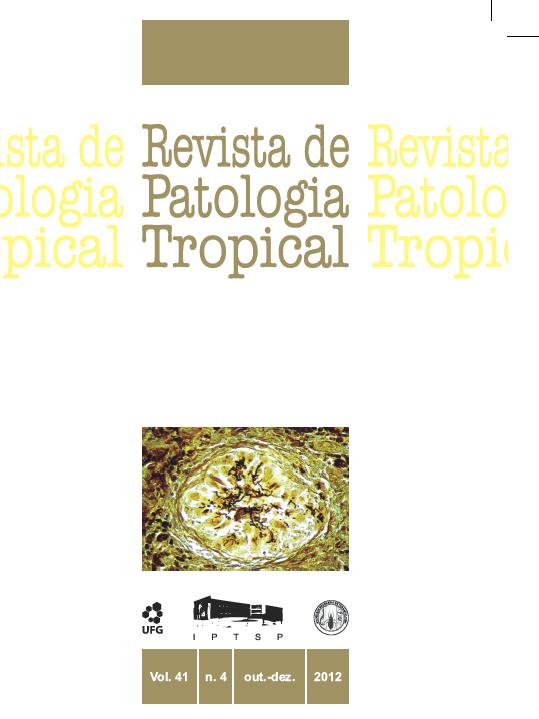Insects of potential forensic and public health importance in the urban region of the State of Minas Gerais: Relative frequency and seasonal variation of fauna attracted and bred in rodent carcasses
DOI:
https://doi.org/10.5216/rpt.v41i4.21711Keywords:
Necrophagous insects, Calliphoridae, Sarcophagidae, Dermestidae, Urban area.Abstract
Necrophagous insects may be important forensic indicators. Many necrophagous flies are also capable of transmitting pathogens and causing facultative myiasis in humans. The present study aimed at obtaining information on the necrophagous insects of the urban area of Uberlândia, State of Minas Gerais, Brazil. Carcasses of rodents were exposed in three different locations in the city until their complete decomposition, during autumn, winter, and spring of 2007 and summer of 2008. Thetraps used consisted of a cage where the carcasses were placed under a pyramid-shaped cover. Trays containing sawdust were placed under each cage for retention of immature and ambulatory adult insects. A total of 1,797 insects were collected in the traps and an other 5,937 specimens were bred in the carcasses. The attracted insects belonged to at least 51 species of 15 families of dipterans and coleopterans. Representatives of Hymenoptera, Hemiptera and Lepidoptera were also colleted. The
Sarcophagidae were the most diverse family and Tricharaea (Sarcophagula) occidea (Fabricius, 1794) (Diptera: Sarcophagidae) was the most abundant species. The insects bred in the carcasses belonged to 18 species of Diptera and one Coleoptera. The blowfly, Lucilia eximia (Wiedemann, 1819) (Diptera: Calliphoridae) was the most abundant, corresponding to 75% of the bred specimens. Several species bred exclusively or almost exclusively in only one season of the year. Peckia species (Sarcophagidae) bred only in winter, Hemilucilia segmentaria (Fabricius, 1805) (Diptera: Calliphoridae) only in the fall and Musca domestica Linnaeus (Diptera: Muscidae) and Dermestes maculatus (DeGeer, 1774) (Coleoptera: Dermestidae) bred only in the spring. The results appoint to several potential species as forensic indicators in the urban area of Uberlândia, MG.
Downloads
Downloads
How to Cite
Issue
Section
License
The manuscript submission must be accompanied by a letter signed by all authors stating the full name and email address, confirming that the material has not been published or is under consideration for publication elsewhere, and agreeing to transfer copyright in all media and formats for Journal of Tropical Pathology. The authors will not be paid for published articles. They are solely responsible for the content of those articles, even if the Editor holds the right to adjust them to the norms of the journal.
The reviewers will not be paid for the peer review process.

